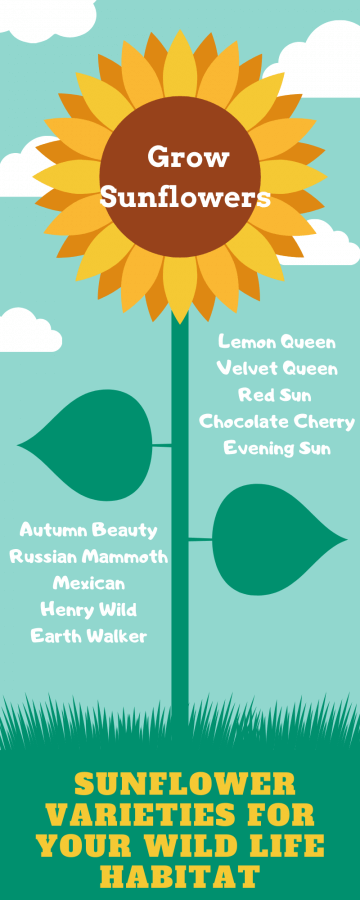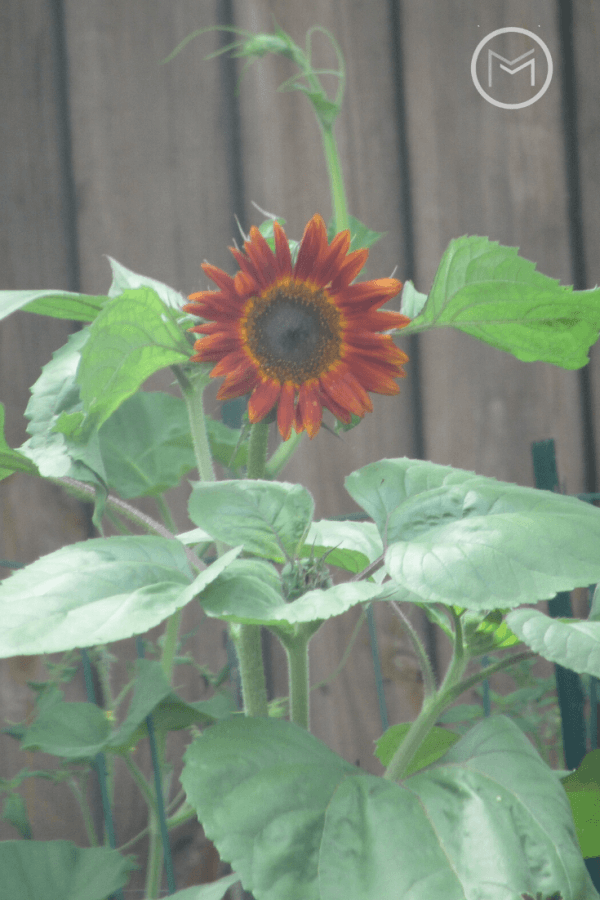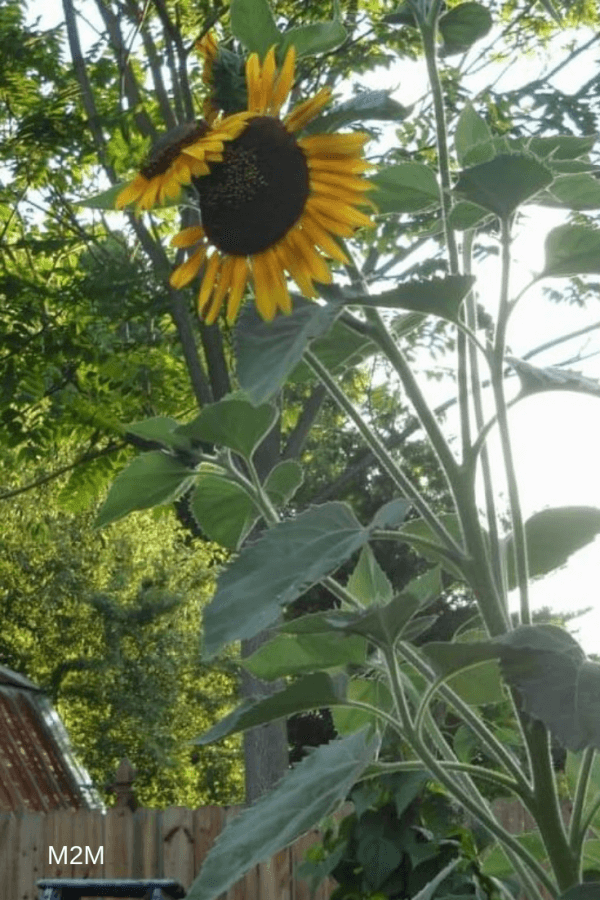Today, I’m sharing garden tips on drooping sunflower heads. I grow sunflowers every year for pollination and food for wildlife. Unfortunately, I always have drooping sunflower heads. When I first saw the drooping sunflower heads, I was disappointed. I grow a variety of sunflowers from Russian Mammoth, which I have grown up to 14 feet high to a smaller variety like Lemon Queen. Regardless, I end up with drooping sunflower heads.
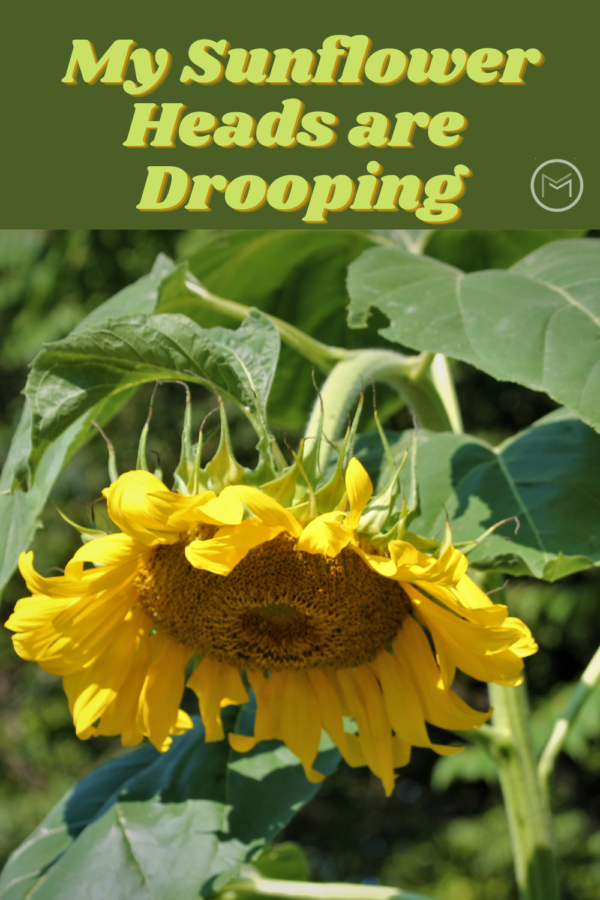
Why You Have Drooping Sunflower Heads:
Seeds are Maturing – Once sunflower heads have completely bloomed and pollinated, the sunflower head will become heavy with seeds. As a result, the heads will bend over. One good thing about the bend head is that they will drop seeds. Hopefully, they will germinate the next growing season. The American Goldfinch love the seeds. They arrive early morning and feast throughout the day. Also, you can harvest the sunflower heads and save the seeds for roasting or adding to your birdseed mixture. I do both. And, I share with fellow gardeners.
Weren’t Planted Deep Enough –Sunflowers need to be planted deeply so they can hold up tall stalks and heavy flower heads. Once they droop, there isn’t a lot you can do. If you can tie up the head without damaging it, give a try. Otherwise, add organic matter to your soil. The amendment will help the soil absorb water. Once the plant has been planted, water deeply every 4 – 5 days to encourage deep roots. This will produce a strong, thick stalk with can hold up the heavy heads. I have had to stalk a few to keep them from falling over. I always keep metal t-post around. They are great in supporting the heavy stalks.
Note: I am an Amazon Associate. If you click on any of the products or purchase, I may be compensated a small fee. However, there will be no additional cost to you.
Sunflower Heads are Heavy – I plant a combination of giant sunflowers like the Russian Mammoth and the Grey Stripe. The picture above is the Grey Strip. My Russian Mammoths and Grey Strip grow around 9 – 11 feet. The heads are massive, about the size of a dinner plat. They stand erect once the head appears, but it’s not usual for the head to end up drooping because it’s heavy with seeds. The head holds approximately 1,000 seeds, and weigh about 2 – 3 pounds.
Lack of Water – If the heads are drooping and the leaves are wilting, your plant probably needs water. Adding mulch or straw around the stem will help it to hold water. Water deeply, and make sure they are receiving water when needed.
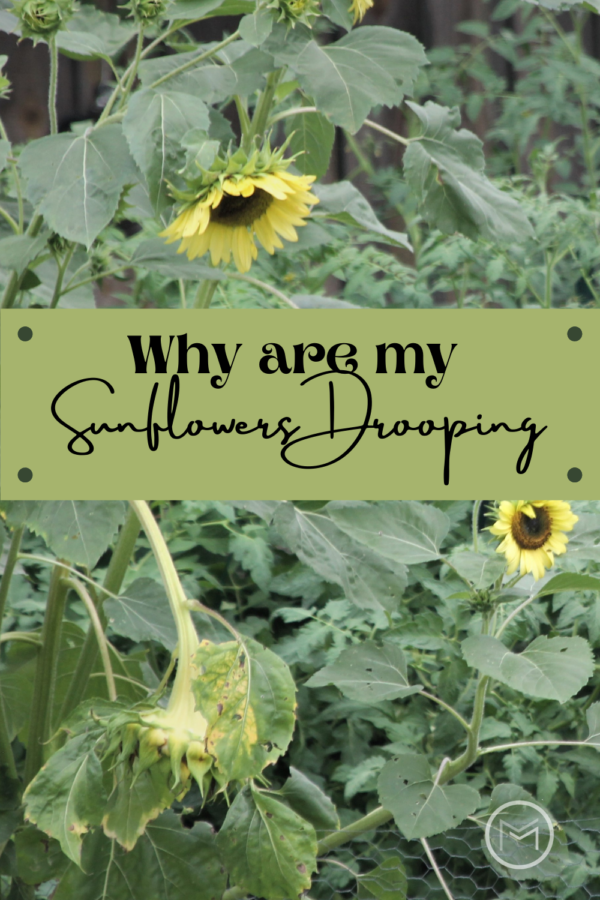
Sadly, I have found that my smaller sunflower plants have drooping heads too. I love when those little smiling faces are up and shining in the sunlight. This is a Lemon Queen (above) which droops too. It is much smaller that the Russian Mammoth and Grey Strip. It only grows to about 4 or feet and the heads are about the size of a saucer. This sunflower is one of my favorites.
So, not matter what variety of sunflowers you grow, you will end up with drooping sunflower heads. It’s all a part of mother nature’s plan
Check out my post on sunflower varieties. Although, you may end up with drooping heads growing sunflowers is a great activity to do with kids. They also provide food for wildlife, make great summer bouquets and beautiful wreaths and crafts once dried. You may also like Gardening for Wildlife.
